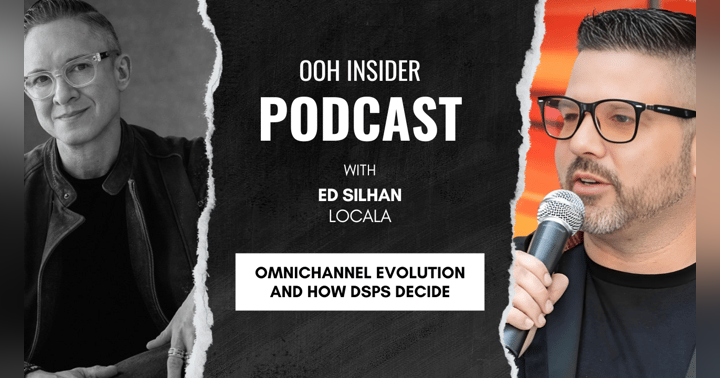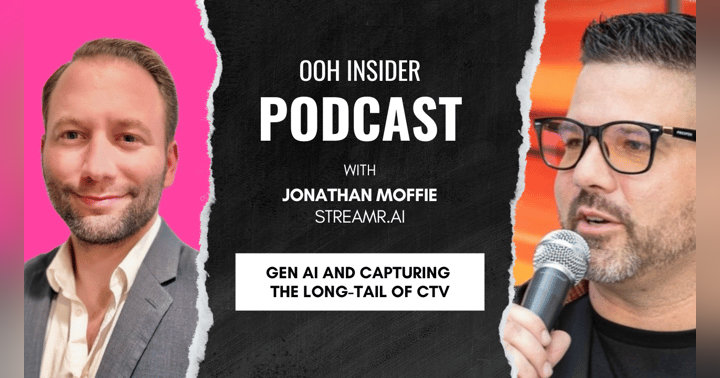OOH Insider LIVE! NYC - How I Planned My First In-Person Event: Lessons Learned from a First-Time Host

1. Define Your Purpose and Audience
Before you start worrying about venues or catering, you need to answer one simple question: Why are you hosting this event? For me, it was all about creating a space for collaboration with people I know, like, and respect—people who I see as great Operators (with a capital 'O') in their own right. These were people I’ve worked with or admired, all brought together because I knew they’d get value from meeting each other.
The goal? Networking, education, and maybe a bit of brand awareness for the podcast, but mostly, it was about creating deeper connections. I focused on inviting top-shelf executives who I knew were open to collaboration. If I didn’t know them personally, they came highly recommended by someone I trusted. Simple as that.

2. Event Format and Structure
I’ve attended my fair share of events, but there was one in particular that inspired me. It had great networking and offered a great opportunity for structured content.
That gave me an idea: What if I could build on that, adding a panel to bring more value?
I stuck with what I knew worked—networking, lunch, a panel, and happy hour. It’s a simple format, but it allows for maximum interaction without overloading people.
And let’s be real—simplicity was key for me. This was my first event, and I didn’t want to get lost in trying to do too much. Partnering with a company that handled the venue, food, and drinks took a lot off my plate so I could focus on the content and the people.

3. Planning and Logistics
Now, when it comes to event planning, I’m no expert. I gave myself about five weeks to pull this together. Was it a tight timeline? Sure. But I had a game plan. The key milestones?
- Secure a sponsor
- Sign contracts
- Announce the event
- Send invites
- Fill Registration
- Close Registration
And finalize everything.
Easy, right?
Well, not exactly. The biggest challenge was knowing I didn’t knowthe nitty-gritty details of venue selection, catering, or AV setups. Luckily, I knew the right people who could execute that part for me.
Lean on your partners— it's the only way to do this without losing your mind.

4. Content and Speakers
The panel was where I really wanted to add value. I love the tension between performance media buying and authority-building brand strategies, so I thought, Why not blend the two and talk about how data enriches both?It was something I was confident would resonate with a lot of people in attendance.
Securing speakers was one of the easier parts for me. I’d already interviewed each of them on the podcast, so I knew their personalities and could imagine how they may mesh on a panel.
My advice for anyone planning their own event? Ask people you’ve seen in action. You want to know how they perform in front of an audience—and, just as important, how they interact with other people in that environment.

5. Engagement and Networking
One thing I didn’t need to worry too much about was getting people to network. (Media folks are naturals at it) But I still made sure to facilitate some small group interactions to get things going. A few 1:1 introductions also helped break the ice.
Here’s the truth: If you create the right environment, networking happens naturally. No need for forced icebreakers or awkward games. Just create the space, and the people will fill it.

6. Food and Venue
The venue was a big win. Everdene at Virgin Hotels in NYC had the space, the views, and the vibe I was after. I didn’t have to do much there—our venue partner handled everything, from furniture setup to food and drink service.
When it comes to the catering, my advice is simple: Trust the staff.
They know their capabilities better than you do. We had a full lunch menu that served to all dietary needs, and the feedback was great. The key is making sure the food and drinks complement the atmosphere you’re trying to create.

7. Event Day Execution
When the day finally arrived, there were a few key things I knew I had to get right:
- A smooth, welcoming experience for attendees.
- Proper seating and setup for the panel so everyone could see and hear clearly.
- Coordination with the venue staff to make sure everything ran on time.
Of course, not everything went perfectly. Our name badges didn’t arrive on time, so the night before, I found myself at Staples printing out DIY badges.
Pro tip: Always have a backup plan for the little things. It’s not the end of the world, but it’s good to be prepared.

8. Post-Event Follow-Up
Once the event’s over, don’t just walk away. Follow up!
Thank you to everyone who attended and supported the day.
Dan Hight and Placer.ai- thank you for your unwavering support and making this day possible.
Jessica Fitzpatrick and Simon Mills - thank you both for clearing customs just to get here and for sharing your unique insights with our great guests.
Benjamin Schwartz and Amelia Tran - thank you for being great partners in helping execute a seamless agenda before, during, and after the event.

Latoya Lovell, Zak S., Jason Hanson, Ernie Kapanke, Simon Mills, and Jessica Fitzpatrick

Scott Fiaschetti, MBA, Dan Hight, Jeff Gunderman, Nick Coston, and Ari Chasin

Mitch Schwartz, Esq., Levi Eichenstein, Nicole Walker, Justin Blum, and Douglas Cordova

Tim Rowe, Deakin Bell, Timothy Hughes, Benjamin Schwartz, Brad Tenem, Matthew Kantack, and Pierre-Emmanuel Padiou

Robert O’Rourke, Brian Rosenberg, Mary Perrella, MBA, Richard Letaw, and Marc Galiano


